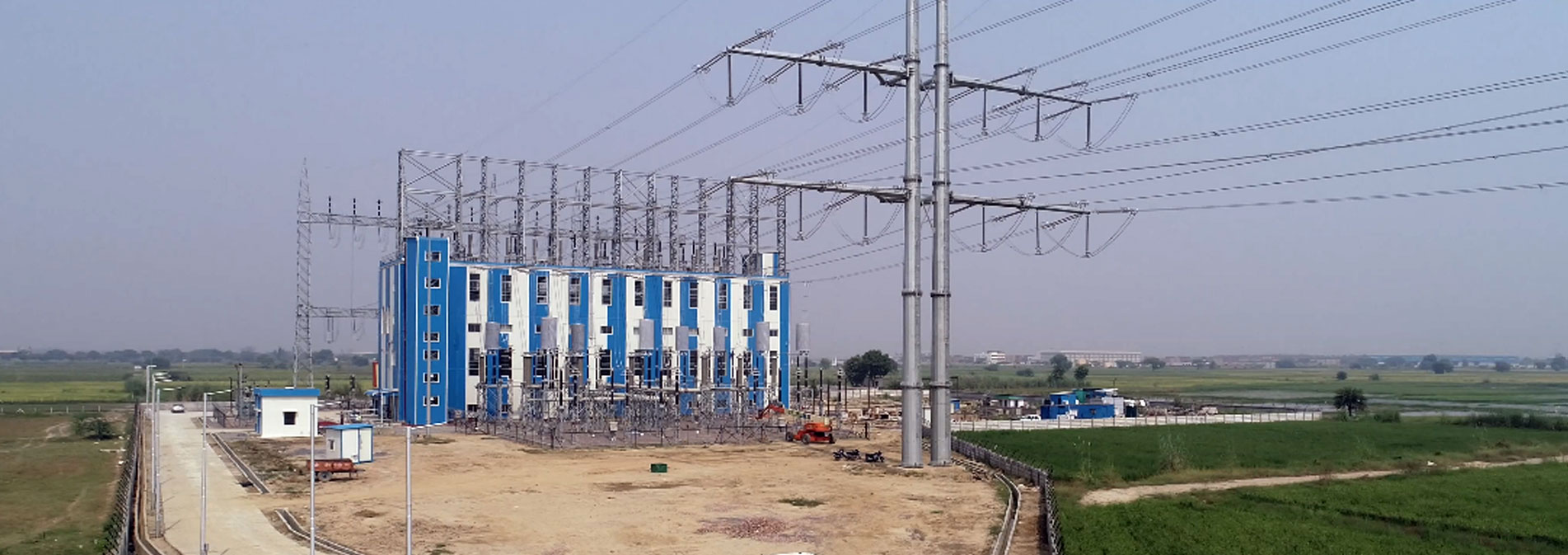
Breakthroughs
India's first vertical GIS substation
Sterlite Power’s Gurgaon Palwal Transmission Ltd. (GPTL) project holds a unique distinction. It is home to ‘India’s first vertical GIS substation’- a game-changing solution that has revolutionised the global power transmission sector by innovatively addressing the critical challenge of space.
Gurgaon Palwal Transmission Ltd. is a 130 km-long Inter State Transmission Line built in an urban landscape, right in the heart of Gurugram and its neighbourhood.
Gurugram is a growing economic powerhouse. Understandably, this bustling industrial region registers a high demand for electricity to power its densely populated commercial and residential areas. Building a linear transmission power project in the heart of Gurugram meant a major challenge in terms of paucity of space. Moreover, the transmission lines and towers had to pass through prime real estate and securing the right-of-way (ROW) was a complicated affair. Securing land parcels for constructing three Gas-Insulated Substations (GIS) at Prithla, Kadarpur and Sohna Road was also an uphill task for the team as a conventional 400/220 kV substation, which spreads out laterally, requires nearly 12 acres of land.
In response, the engineering team at Sterlite Power came up with a brilliant idea - a vertical substation which, as the name goes, was developed as a compact, multi-storeyed structure. The innovative idea houses the 400 kV GIS equipment on the ground floor, the 220 kV GIS on the first floor and the open 220 kV switchyard on the roof. The entire GIS substation occupies just 3.8 acres, thus, reducing the land required by as much as 75 percent. There were other space-saving innovations too. For instance, the project built multi-circuit monopole towers across the transmission path, using micro piling to create the foundations.

 Multi-circuit monopole towers
Multi-circuit monopole towers
In addition to space-saving, another remarkable advantage of these vertical substations is the reduced carbon footprint. In the GPTL project, these substations have offset more than 18,000 tons of carbon dioxide emissions annually, vis-à-vis its conventional counterparts. Since real estate for urban power projects remains a continuing challenge the vertical substation design packs a power punch given the numerous advantages. By optimising the use of available land, it offers cost and space efficiencies. Sterlite Power has filed a patent application for this innovation.
In April 2020, amidst the national lockdown owing to the pandemic, the project was successfully commissioned with help from the local administration. It is fully operational today and true to its commitment, playing a vital role in evacuating about 2,000 MW of reliable power to more than three million households in Haryana. By ensuring a reliable supply of power, the GPTL project would be instrumental in reducing the use of highly polluting diesel generator sets in Gurugram and the adjoining areas of Manesar and Palwal, thereby helping to make it DG-set free.
Built on a robust foundation of technology and innovation, GPTL has been a true manifestation of our core purpose — ‘Empowering humanity by addressing the toughest challenges of energy delivery’.